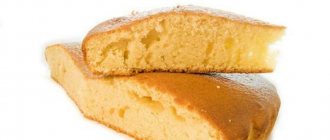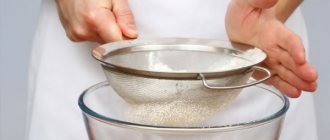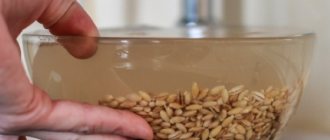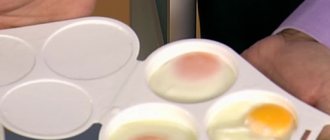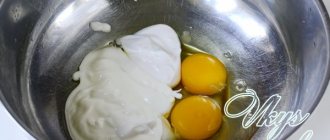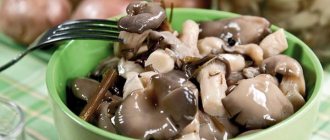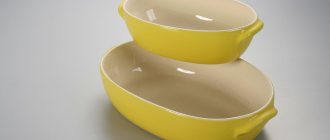Advantages
The method of sterilizing jars using a microwave oven has many advantages:
- Possibility of simultaneous processing of several small-volume cans (up to 0.5 l).
- The humidity and air temperature in the room where the procedure is carried out practically does not change during the work.
- Doesn't take much time.
Among the few disadvantages of using a microwave oven are the following:
- High energy consumption.
- Inability to sterilize containers with a volume of more than 4 liters.
- The need to alternately process three-liter containers on their sides.
The nuances of sterilizing jars with blanks
Some containers with workpieces should be processed not only before placing products inside them, but also after. Which preservation may require additional sterilization:
- with mushrooms;
- vegetable salads;
- fruit or berry juices;
- fruit compotes.
Which containers should not be additionally sterilized:
- for jam;
- with pickled vegetables;
- with cucumbers and tomatoes topped with vinegar.
How to process a glass container together with workpieces (standard, which varies depending on the type of workpiece):
- Prepared, washed jars are filled with products.
- A little (up to 1 cm) of water is added inside the jar.
- The prepared dishes are placed inside the microwave oven.
- The processing time should be 5 minutes.
- In this case, the jar should not be covered with lids.
- After sterilization, the preservation is removed from the microwave oven.
- The container is filled to the top with boiling water, boiling brine or prepared liquid for preservation.
- The jars are sealed with sterilized lids.
With jam
Sterilization of containers with jam takes place according to a processing method different from the one described above. And yet the basic parameters remain unchanged. The sterilization process is carried out as follows:
- Cans filled to 80-85% of their volume are placed in the oven.
- Jars are processed without lids and should be sterilized separately.
- The microwave power is set to maximum. Check that the containers do not touch each other.
- The timer stops for 6 minutes. During this time, sterilization is carried out.
- After the sound signal, the microwave oven door does not open. The product is left there for another 5 minutes. Throughout this time, sterilization continues due to the hot air generated inside the microwave.
- The containers should be removed one at a time. Potholders used in work must be dry and clean. This is necessary to avoid cracks in the cans due to temperature changes. The jam is then sealed with pre-sterilized lids.
With salads and pickles
Jars of pickles must be processed according to the algorithm described at the beginning of the section. You can process cucumbers or tomatoes this way.
This measure is necessary due to the boiling of the product. Since salads contain liquid, the volume of the product will increase when boiling. A jar filled to the top will definitely stain the inside walls of the microwave and will be dirty when removed from the microwave. In addition, part of the salad will be lost.
Processing of jars with salads should be done according to the following algorithm:
- 2/3 of the volume of the jar is filled with salad, the container is placed in the microwave.
- The glass should not come into contact with each other (this is important when processing several containers at the same time).
- The timer is set for 3 minutes. After completing this processing, the jar should be in the microwave for another five minutes.
- Then the workpiece is removed from the oven, filled to the top with hot salad and sealed.
With fruits and berries
Sterilization of containers containing fruit or berry fillings is carried out according to the algorithm described at the beginning of the section. Additional comments and changes include the following:
- The amount of liquid added should be increased. Depending on the volume of the jar, it is recommended to fill from 10 to 50% of the jar with liquid.
- You should add not just water, but sugar syrup. The amount of sugar is determined at personal discretion. The syrup should not be made too thick; it must be suitable for boiling.
- After completing the sterilization process, it is necessary to add boiling water to the top of the jars and seal them with metal lids with rubber bands.
Depending on the volume of the jar, the amount of liquid to be filled is determined. In any case, you should not pour so much liquid that the top 5 cm of the jar is filled. The poured amount of liquid should not boil away completely within 5 minutes of sterilization.
Why is sterilization necessary?
Without sterilization it is impossible to store pickles. It kills microorganisms that spoil the product. The vital processes of microbes create dangerous substances that cause poisoning and disease. To prevent jars from exploding, and to prevent health problems from consuming canned food, a process of disinfection of containers for storing canned food is necessary.
Even if the preservation looks good in appearance, this does not mean that the product is free of toxins. Particularly dangerous is botulinum toxin, which can be fatal.
Even thoroughly washed dishes contain living organisms. It is not enough to simply wash the container. Therefore, sterilization is of great importance in this matter; it ensures safety.
Preparation stage
Before sterilizing jars with preparations in the microwave, you need to be well prepared for the process. It is this stage that determines whether the containers will remain intact after heat treatment.
To do this, we proceed like this:
- You need to inspect the jars for chips, cracks and visible defects. If heated, they will become centers of stress concentration, and the glass will burst.
- Wash and rinse jars thoroughly in clean water. The use of various detergents with fragrance is prohibited. It is best to wash the container with baking soda and rinse it in clean drinking water.
- Dry the container. The best way is in a natural way, without using napkins and towels.
- Before sterilizing salad jars in the microwave, you need to treat the lids separately. It is enough to boil them in a separate pan. It is unacceptable to place the lids in a microwave oven, as they are metal.
All preparatory work is important, but you should pay particular attention to the first point.
How to sterilize empty jars in the microwave
Even clean containers are washed again before processing. Detergents should be washed off with large volumes of water. For washing, you can use the usual products: baking soda and laundry soap.
The containers are dried and checked for integrity. Even a small defect can sometimes cause the jar to burst. It is better not to use it if it is damaged.
Ferry
- To perform sterilization, filtered water is poured into the container. It should fill the dish by 2-3 cm to create a steam bath.
- Tap water is not suitable. Its use will create lime deposits on the container, which will then have to be cleaned.
- We send the containers to the microwave oven. They should not touch the walls of the device or interfere with the plate in the center from rotating, otherwise the result will be incomplete.
- You can load up to 5 half liter jars into the microwave. A three-liter dish is placed on its side, there should be water in it, and a towel folded in several layers is placed between the stove plate and the jar.
- Small jars need to be kept for 4 minutes. with an oven power of 1000 W. Large volume dishes are processed at a power of 650 W for 7 minutes.
- The time has to be selected in each specific case. It’s better to play it safe and increase the processing time by a few minutes. It is important that the liquid boils.
- After processing is completed, the containers are removed using a tack. It must be dry so that the container is not damaged. The remaining water is poured out, and the jars are dried with a sterile bandage or gauze and used for their intended purpose.
- A large amount of sterilized containers is placed upside down on a dry towel and kept that way until conservation begins.
- When filling jars, you need to make sure that the glass and the workpiece are approximately the same temperature.
- Only glassware is sterilized using the described method.
Important! It is unacceptable to process tin lids in the microwave; you cannot do this with polyethylene either. The lids need to be treated with boiling water for a quarter of an hour.
Dry method
- Sometimes sterilization results in completely dry containers. Wet jars are not always suitable. can also be sterilized .
- Fill the glass with filtered water 4 cm below the rim. Liquid pours out of a full glass when it boils.
- Place the glass in the middle and load empty jars. Processing is carried out for 5 minutes. at a power of 750 W.
- Upon completion, we take the containers with an oven mitt and begin canning. The main thing is to avoid sudden temperature changes.
Watch the video! How to properly sterilize jars in the microwave
For jam
- Many people are concerned about the question of sterilizing jars filled with jam. There is nothing complicated about it. The bowl should not be filled to the brim with jam; you should leave 5 cm from the edge.
Important! Sterilization is carried out without lids.
- The jars are placed so that they do not touch each other. The process is carried out at maximum power for 6 minutes. For a powerful oven, the time can be reduced to 2 minutes.
- After turning off the timer, keep the jam in the jars in the oven for another 3-5 minutes. All this time, sterilization continues.
- We take the jars with an oven mitt so that nothing cracks. The product is cooled and rolled up with sterilized lids.
Sterilizing jars in the microwave using steam treatment
How to cook buckwheat: general rules and unusual methods
This method of sterilizing jars in a microwave is performed as follows:
- Pour a little water into clean jars - a couple of centimeters. It is recommended to use filtered water so that it does not leave limescale.
- Place the jars in the microwave and do not cover them with lids.
- Turn on the oven at 700-800 watts.
- Processing will take 2-3 minutes, depending on the volume of the container. A three-liter jar may need 5-6 minutes. When the water boils, wait 3 minutes and turn off the microwave oven.
- Carefully remove the jars using special oven mitts or a dry towel. Reach with only two hands, without holding the container by the neck.
The remaining water should be poured out and the jars should be immediately filled with food. If you do not immediately stack the workpieces, then you need to place the containers upside down on a clean cloth and turn them over just before filling. And keep in mind: only hot foods should be placed in hot jars, and only cold foods should be placed in cold jars. Temperature changes should not be allowed.
All methods of processing dishes before preservation have their pros and cons. When processing dishes at home, you should select options aimed at achieving maximum convenience and comfort during the canning process. When choosing a method, you should evaluate your own data to determine whether it is appropriate. An analysis of the advantages and disadvantages of a particular method will help with this.
Pros and cons of sterilizing jars intended for preservation inside a microwave oven:
- Speed of the procedure. Processing the jar takes less time than with the standard method of processing on a gas stove.
- There is no need for constant monitoring, which may arise for housewives who, in addition to conservation, are caring for infants. You cannot leave the jar on the stove unattended during classical sterilization. When processing dishes in the microwave, a timer is triggered, which turns off the heating device.
- High speed with small volumes of preservation. If 0.5 liter containers are used for preservation, it is possible to simultaneously process several units. This is not possible when processing cans using the classical method.
- The microclimate of the room does not change. There is no steam or disappears inside the oven. The temperature and humidity in the room do not increase.
For some, this list of advantages is decisive for choosing this sterilization method. However, this method also has disadvantages that have made this method of processing dishes unsuitable for some:
- high energy consumption of the heating device;
- the need to additionally process metal lids (metal objects cannot be placed in the microwave oven);
- when preserving a large volume, this processing method may take longer;
- jars with a volume of about 3 liters are placed in the oven only one at a time.
It is absolutely impossible to sterilize jars in the microwave at the same time as screw-on lids, since such lids are made of metal. According to the data specified in the instructions for any microwave oven, metal objects cannot be heated in a microwave oven in order to avoid equipment failure and fire.
Screw caps used to seal jars must be sterilized separately. The following methods will work:
- inside the oven;
- in boiling water;
- a solution of potassium permanganate, furatsilin or alcohol.
The lids should be prepared before canning so that the product can be rolled up in minutes when removed from the microwave. Microwaved jars can be closed with screw caps. In this case, you can close jars with such lids, processed both with pickles or fruits, and without them.
Metal lids cannot be sterilized in the microwave.
How to sterilize jars with blanks
- Jars with pickles and salads are processed in the same way as with jam. But 2/3 of the composition must be removed from the container. Otherwise it will boil away and ruin the unit. Later the workpiece can be added to the edge.
- Place the jars on a rotating plate without touching one another. Boiling is carried out at maximum power for 3 minutes. Then the pickles are left in the oven for another 5 minutes.
- Use a glove or towel to remove the jars and leave them at room temperature until cool. At this time, sterilize the lids. Fill the jars with the blanks to the brim and roll them up.
Fruits and berries in jars
- Many people are concerned about the question of whether it is possible to sterilize jars of raw berries and fruits. There's nothing complicated about it.
- Prepare syrup from sugar and filtered water. Everyone chooses the recipe at their own discretion; the more sugar, the sweeter the syrup.
- We sort the berries, remove spoiled ones, wash them, and leave the seeds. Fill the jars with fruit, fill with syrup, leaving 5 cm to the edge.
- In very powerful microwave ovens, the processing time is 2-3 minutes. In conventional devices – 5 minutes.
- Sometimes the housewife does not fill the syrup completely. It is added after sterilization. It is so convenient to boil any kind of currants, gooseberries, raspberries, strawberries, cherries, cherries, strawberries, lingonberries.
Microwave sterilization is being used increasingly. Many housewives have already managed to appreciate all its advantages. The speed of all operations, simplicity and practicality of the method attract many. The procedure helps save energy and a lot of time when carrying out seasonal conservation for the winter.
You should definitely use steam treatment of the container or prepare it using the dry method.
Watch the video! Express canning cucumbers in the microwave
The nuances of sterilizing jars with blanks
Methods for making jam from whole or sliced tangerines
Some containers with workpieces should be processed not only before placing products inside them, but also after. Which preservation may require additional sterilization:
- with mushrooms;
- vegetable salads;
- fruit or berry juices;
- fruit compotes.
Which containers should not be additionally sterilized:
- for jam;
- with pickled vegetables;
- with cucumbers and tomatoes topped with vinegar.
How to process a glass container together with workpieces (standard, which varies depending on the type of workpiece):
- Prepared, washed jars are filled with products.
- A little (up to 1 cm) of water is added inside the jar.
- The prepared dishes are placed inside the microwave oven.
- The processing time should be 5 minutes.
- In this case, the jar should not be covered with lids.
- After sterilization, the preservation is removed from the microwave oven.
- The container is filled to the top with boiling water, boiling brine or prepared liquid for preservation.
- The jars are sealed with sterilized lids.
With jam
Sterilization of containers with jam takes place according to a processing method different from the one described above. And yet the basic parameters remain unchanged. The sterilization process is carried out as follows:
- Cans filled to 80-85% of their volume are placed in the oven.
- Jars are processed without lids and should be sterilized separately.
- The microwave power is set to maximum. Check that the containers do not touch each other.
- The timer stops for 6 minutes. During this time, sterilization is carried out.
- After the sound signal, the microwave oven door does not open. The product is left there for another 5 minutes. Throughout this time, sterilization continues due to the hot air generated inside the microwave.
- The containers should be removed one at a time. Potholders used in work must be dry and clean. This is necessary to avoid cracks in the cans due to temperature changes. The jam is then sealed with pre-sterilized lids.
With salads and pickles
Jars of pickles must be processed according to the algorithm described at the beginning of the section. You can process cucumbers or tomatoes this way.
This measure is necessary due to the boiling of the product. Since salads contain liquid, the volume of the product will increase when boiling. A jar filled to the top will definitely stain the inside walls of the microwave and will be dirty when removed from the microwave. In addition, part of the salad will be lost.
Processing of jars with salads should be done according to the following algorithm:
- 2/3 of the volume of the jar is filled with salad, the container is placed in the microwave.
- The glass should not come into contact with each other (this is important when processing several containers at the same time).
- The timer is set for 3 minutes. After completing this processing, the jar should be in the microwave for another five minutes.
- Then the workpiece is removed from the oven, filled to the top with hot salad and sealed.
With fruits and berries
Sterilization of containers containing fruit or berry fillings is carried out according to the algorithm described at the beginning of the section. Additional comments and changes include the following:
- The amount of liquid added should be increased. Depending on the volume of the jar, it is recommended to fill from 10 to 50% of the jar with liquid.
- You should add not just water, but sugar syrup. The amount of sugar is determined at personal discretion. The syrup should not be made too thick; it must be suitable for boiling.
- After completing the sterilization process, it is necessary to add boiling water to the top of the jars and seal them with metal lids with rubber bands.
Depending on the volume of the jar, the amount of liquid to be filled is determined. In any case, you should not pour so much liquid that the top 5 cm of the jar is filled. The poured amount of liquid should not boil away completely within 5 minutes of sterilization.
